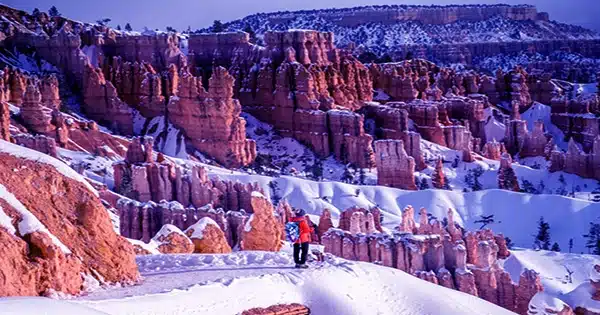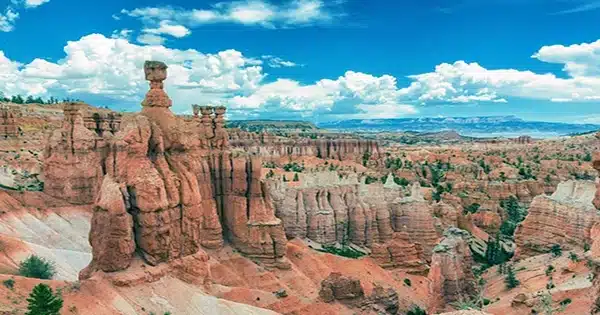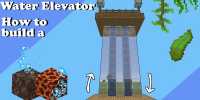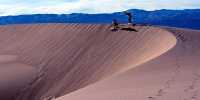The Grand Staircase is a 160-kilometer (100-mile) stretch of sedimentary rock that was first proposed by geologist Clarence Dutton in the 1870s. Dutton envisioned it as a massive stairway that climbs from the Grand Canyon at one end and rises to a high plateau atop where Bryce Canyon National Park lies, marking a small sliver in the final step of this epic, 200-million-year-old creation.
Bryce Canyon’s formation began some 50 million years ago, when parts of Utah were still covered in an old lake and floodplain system, and layers of sediment began to pile. As the soil dried out and the strata became part of the region’s geological record, plate tectonics raised the plateau, exposing the alternating layers of rock with varying strengths and colors.
Bryce Canyon’s rocks include limestones, dolostones, mudstones, siltstones, and sandstones. Weathering broke down these layers at varying speeds, and erosion peeled away the weaker areas until they carved out hoodoos: a geological word for natural rock spires.

Ice and rain are the primary sculptors responsible for the breathtaking creation that is Bryce Canyon National Park, which currently boasts the world’s highest concentration of hoodoos. The canyon’s extraordinary elevation is partly to blame, with temperatures below freezing for more than half of the year.
The repeated freezing and thawing of water in the rock causes “ice wedging,” which occurs when water turns to ice and expands, breaking the rock apart. These breakdowns frequently begin as walls, then become holes, and finally change into hoodoos.
Given the importance of ice and freezing temperatures in the construction of Bryce Canyon, geologists are concerned about what may happen to the region as a result of the climate crisis. Warming temperatures may wipe off Bryce Canyon’s distinctive hoodoos, as freeze-thaw days appear to be declining. However, little research has been conducted on the subject, and as Clare Crise concluded for the National Park Service, “without the science, we cannot hope to address or adapt to climate change’s impacts on them.”















